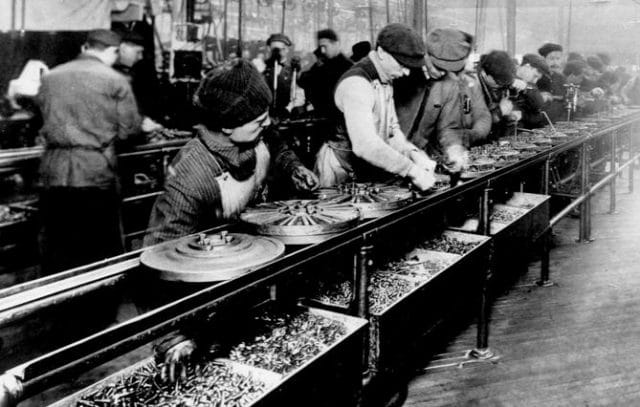Do you prefer eating at small restaurants or large ones?
While some foodies have a preference for the intimacy of a restaurant worked by a single waiter, the experience is similar at restaurants of all sizes. Diners are greeted, seated, and handed menus. They order drinks, appetizers, and a main course. And after accepting or declining coffee and dessert, customers pay their bill and leave.
From a manager’s perspective, however, running a hole in the wall is about as similar to running a large restaurant as Henry Ford’s model T factory is to a shop building cars or motorcycles by hand.
The latest issue of The New York Times Magazine goes behind the scenes at the 180-seat, New York City brasserie Balthazar. The article sums up the restaurant, which espouses a rustic bistro ethos, as a “a highly efficient, well-oiled potato-chipping machine.”
Almost everyone who works at Balthazar, the author notes, refers to it as a machine. It operates nearly 24 hours a day, with deliveries coming in a few hours after the last dinner guests have left for the night.
“Quite literally, raw materials enter through one side early each morning, moving through various stations, where 150 to 200 employees, each playing a narrowly defined role, produce finished, value-added and marked-up goods and serve them directly to end users.”
Fine dining may be associated with creative dishes and conversation lubricated by wine, but the machine has all the spontaneity of a button factory. Balthazar’s managers know how many burgers, goat-cheese tarts, and chicken clubs will be sold each day. They order ingredients accordingly and begin preparing them in pots “large enough to fit a small child” hours before anyone will order a dish. The menu is balanced so that no part of the kitchen will ever face a bottleneck. The author writes, “The plat du jour, for example, is rarely a grilled dish because the grill station is already so busy with steaks and burgers.”
The kitchen also has very little room for error. The pace is fast and one snag can disrupt the entire process. A buildup of unwashed dishes from an unexpected rush of diners could result in “the sort of domino effect that a kitchen might not bounce back from.” A lack of clean plates and silverware means dishes go out late and cold, resulting in the kitchen clogging with requests for dishes to be reheated.
Few restaurants have chefs cooking a dish from start to finish, instead relying on sous-chefs down to prep cooks to be in charge of different steps of the process. But large restaurants like Balthazar take this specialization to an extreme, with some prep chefs sole role in the assembly line being peeling and soaking potatoes.
This is not a case for the superiority of small restaurants. While the factory-like cooking process at Balthazar may seem soulless, chefs at small restaurants are not leisurely whistling. In the low margin restaurant business, no one can afford not to create an assembly line of prep cooks. Even one man or woman kitchens have their system down to a routine. The chaos of a kitchen cranking through orders like a well-oiled machine lies behind the calm of every dining room. What is remarkable is that restaurants with 200 tables and restaurants with 10 tables offer almost the same experience
This post was written by Alex Mayyasi. Follow him on Twitter here or Google Plus. To get occasional notifications when we write blog posts, sign up for our email list.




